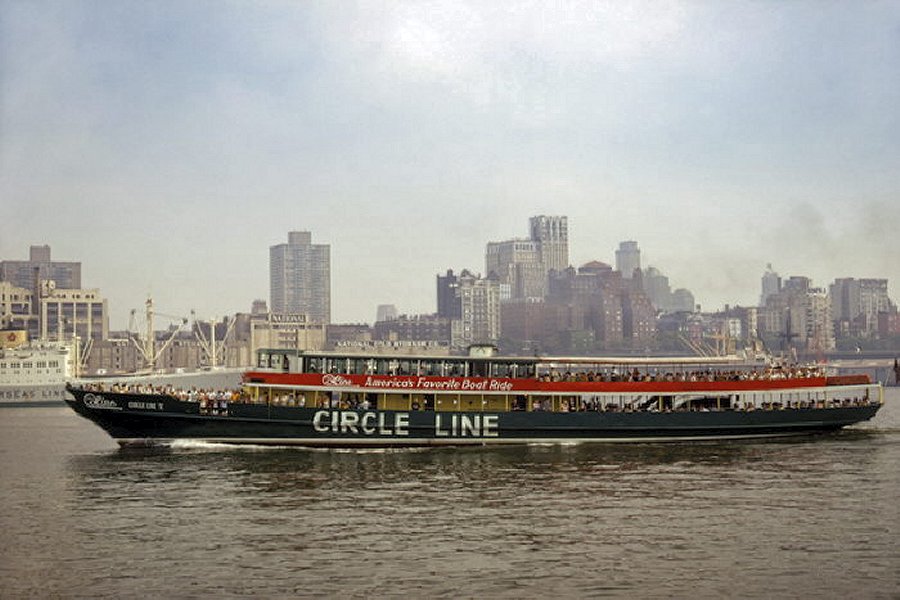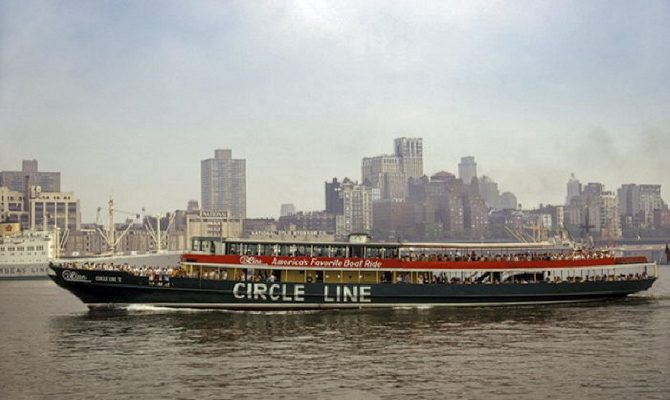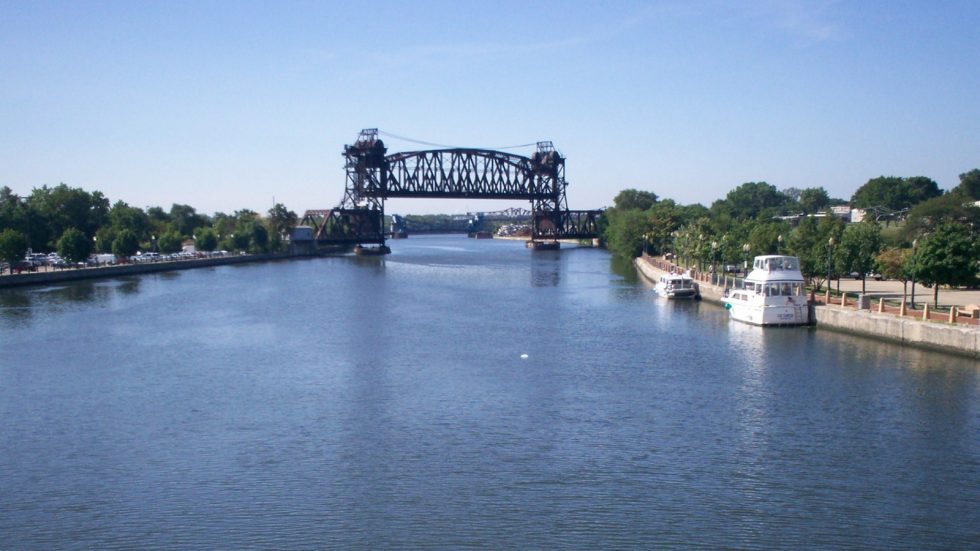Roughly 25 miles downstream from Cincinnati, the Ohio River diverts into a creek on the southern shore and up against a ship that appears to have docked for the last time. It’s a vessel that served in two World Wars, carried one of the world’s greatest minds and shuttled tourists around our country’s largest city — all before it found itself left in our murky Midwest waters.
The vessel has been known by many names. The most recent one can still be found in the faded paint on its hull: Circle Line V. To understand why the ship is significant and just how it ended up where it did, we need to start in Wilmington, Del. On April 12, 1902, the 186-foot, steam-powered ship was launched as the Celt. She was commissioned as a luxury yacht by a railroad executive. After changing owners, she was renamed the Sachem.
When World War I broke out in 1914, Germany’s best hope of defeating the British depended on using its U-boats to cut off supply lines from North America. In July 1917, the Navy acquired the Sachem, dubbing it the USS Sachem, outfitted it with depth charges and machine guns, and stationed it off the U.S. Atlantic coast as part of counter-submarine measures.
In time, the Navy gave the Sachem to Thomas Edison so he could use the vessel for anti-sub experiments around New York Harbor. Edison’s relationship with the Navy was tumultuous. In a 1923 article, he told a newspaper reporter that the Navy “pigeon-holed” every invention he offered. With the war ending in November 1918, so did Edison’s funding. He returned to his other business ventures, and the Navy returned the Sachem to the owner it had been renting from.
As the post-World War I years went on, the Sachem changed hands a few times, eventually becoming a fishing vessel under the command of Capt. Jacob Martin of Brooklyn, N.Y. Martin had taken advantage of the Great Depression when he purchased the Sachem in 1932. Luxury yachts that had once been available only to the upper crust could now be purchased at ridiculously low prices. Like many captains, Martin opened up his ship to anyone willing to pay $2 to board it. Some came to party, others came to catch fish in order to feed their families.
On December 7, 1941, the Japanese Navy launched a surprise attack against the U.S. at Pearl Harbor. Our involvement in Word War II had begun. Faced with an even greater U-boat threat than before, America was once again in need of ships that could guard the homefront. The Navy rented the Sachem a second time, re-outfitted it with armaments and christened it the USS Phenakite in July 1942.
The Phenakite acted as a training and patrol vessel. Anti-sub tactics had advanced since Edison had been on board. By day, the Phenakite would take on sailors training to use the sonar equipment; by night, she patrolled Key West harbor. Eventually, the ship was assigned to guard Long Island Sound in New York, where she served out the rest of the war before being returned to Martin and reverting to the name Sachem.
Before the war’s end in the summer of 1945, several tourism cruise lines merged to form Circle Line Sightseeing Cruises in New York City. The Sachem was purchased from Martin, renamed Sightseer, and became the flagship of the new fleet. At some point, Sightseer came to be known as the Circle Line V and received the paint scheme that can be seen faded on the abandoned ship’s hull today.

Eventually, Circle Line’s operation grew to a demand that the Circle Line V could no longer meet. Sometime in the early 1980s, with the ship having been in continued use for nearly eight decades, she was dropped from the fleet and left at an abandoned pier in New Jersey.
Enter Robert Miller in 1986. A Cincinnati resident, Miller was looking to buy an old steam yacht and had come across the Circle Line V sitting idle. The vessel’s owner sold it to him for $7,500. Miller told The Kentucky Enquirer in 2011 that it took him 10 days to repair the boat and get it seaworthy again.
One day while he was working on the ship, a limousine pulled up to the dock. A representative of Madonna greeted Miller, asking to use the Circle Line V as a background element in one of the pop star’s upcoming music videos. The ship ended up having a cameo in the video for Madonna’s hit single “Papa Don’t Preach.”
On July 4, 1986, President Ronald Reagan symbolically relit the torch of the Statue of Liberty at the iconic landmark’s rededication ceremony. The day was celebrated with musical performances and a massive fireworks display. Miller and his Circle Line V were there, loaded with partygoers enjoying the celebration.
Not long after, he brought the ship back to a plot of land he had purchased in northern Kentucky, just outside of Cincinnati. Miller and a small crew navigated her from New York, through the Great Lakes, down the Mississippi and onto the Ohio River. About 25 miles west of Cincinnati, he turned the boat down a creek into a small tributary of the Ohio on his property.
While Miller intended to refurbish and restore the ship, that never happened. The vessel has sat in that spot ever since — an forgotten footnote in the history of our country.




